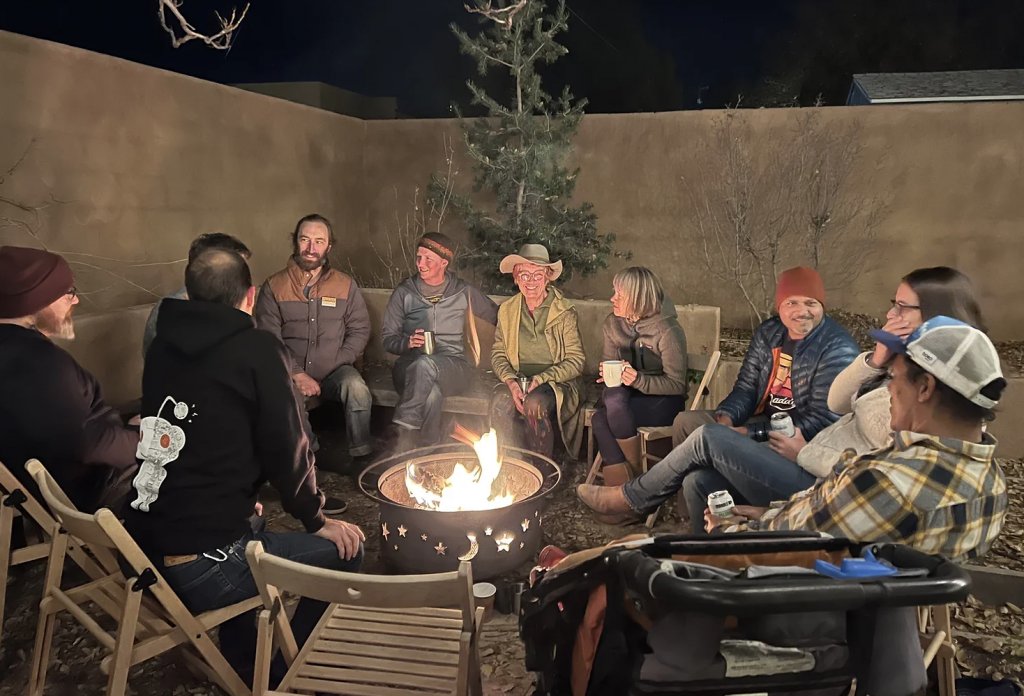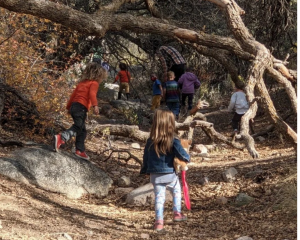Who are Cohousers?

The number one reason most people choose to live in cohousing is to experience a true close-knit community of neighbors. But who are these cohousing neighbors? Where do they come from? What are they like?
It turns out, if you look at cohousing communities across the United States, whether decades old or in various stages of development, there are consistent commonalities among community members. Learning about these shared traits (along with other factors of course) may help you decide if you’d be a good “fit” for a cohousing community and would feel at home with those around you.
First off, let’s look at member origins. Regardless of where a cohousing community is located, as many as a third to half of its members come from outside the region, some even from other countries. Many community members have lived in multiple states or are well-traveled, drawn by opportunities to learn through exposure to different cultures and geographical regions.
Some are interested in senior-only cohousing, while others, like members of Cohousing ABQ, want a multi-generational community where you’ll live closely with a wide range of ages and family types. Some prefer cohousing in a rural setting while others pick a community in the heart of a city like Aria Cohousing in a former convent in Denver, Colorado. Cohousing ABQ in Albuquerque offers a mix of both, with its land sited on a rural-feeling plot of land next to the Rio Grande Bosque, but also only minutes from Albuquerque’s charming Old Town.

Cohousers often pursue lifelong learning and have a higher-than-average education. They are college professors and teachers, architects and engineers, scientists and lawyers. Many are from the medical professions or the healing arts. Some have started their own businesses; others work for non-profits. All seem committed to using their time and energy to make a positive difference in the world. So it’s not surprising that many cohousers, in addition to work and caring for their families, are engaged in volunteerism and service to their communities. Some have even left behind a high-paying profession for lower-paying work or pursuits that they feel better enrich the soul and bring more balance and purpose to their lives. Cohousers are often outdoor enthusiasts who love connecting with nature – whether it is hiking through the mountains, biking into town, or tending to a garden. They like growing their own food (especially with community help) and supporting local farms. They’re committed to doing their part to save the earth: to reduce their consumption of resources, support sustainability and renewable energy, and be less car-centric. Jim, a member of Haystack Heights Cohousing in Spokane, Washington says cohousing “makes sustainability less work and more fun because you add community to the equation in meaningful ways.” But let’s get back to that common thread connecting all cohousers: choosing community for a better quality of life. The Cohousing Association of the United States, a national non-profit, sponsors events, research, an e-newsletter, and an online directory of communities both forming and established. In a recent newsletter article from the association was this interesting comment about cohousing: “Every day I hear stories of people who found community and never went back to the individualistic “American Dream.”
“This dream of a true community where all are accepted and nurtured and connected is the greatest commonality among cohousers and what keeps them committed to cohousing for a lifetime.”
But what does that really mean? Who doesn’t want the great American Dream? If you read the profiles of cohousing members across the country, you’ll find that many had what we consider the American Dream. They’d achieved successful careers, had their own home, and were materially well off. And yet they found the reality of that dream lacking. Particularly they found connection to friends, family, and neighbors was lacking. Seeing friends and family always seems to require making special plans and driving across town or even across the country – so it rarely happened. They were surrounded by neighbors, but shared little more than a friendly wave and wouldn’t dream of asking for a favor or borrowing something. Cohousers miss the old-fashioned neighborhoods where kids were safe to run around and play all day because everyone knew everyone else. Neighbors dropped in for coffee. Parents had someone they could call on to watch the kids for an hour. Or a senior found meals at his door step when he was sick. In an article on businessinsider.com, Laura McCamy tells one story about the impact of living in cohousing. “When construction finished on a new apartment building on our block, one of my neighbor’s kids asked when we were going to meet the people who had moved in. She had lived her whole life in cohousing, where she was always welcome to knock on any door. She couldn’t imagine new neighbors who didn’t become friends, but that’s exactly what happened with the people who moved into those new apartments. In fact, we never see them.”
“Learning about these shared traits …may help you decide if you’d be a good fit for a cohousing community and feel at home with those around you.”
The security of a true community, the enduring relationships, the shared life events, and the spontaneity and ease that comes with truly caring about one’s neighbors, with sharing meals in the common house, with planning fun activities for kids and adults alike, and with using consensus for group decisionmaking. This dream of a true community where all are accepted and nurtured and connected is the greatest commonality among cohousers and what keeps them committed to cohousing for a lifetime. If this sounds like an environment where you and your family could thrive, check out the profiles of our community members and discover the great bunch of vibrant, dedicated, and resourceful neighbors you could be a part of at Cohousing Albuquerque.
Category: Living in Cohousing
Tags: choosing cohousing, community, living in cohousing, neighborhood
Views: 15895

